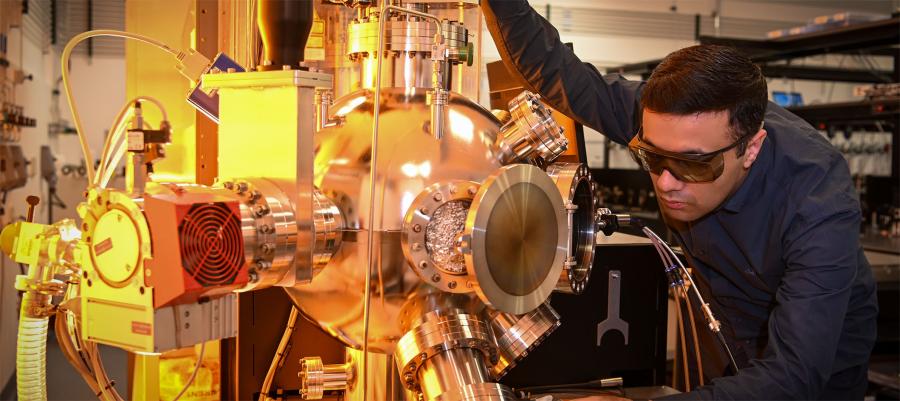- About
- Admissions
- Study at AUS
- Prospective Students
- Bachelor's Degrees
- Master's Degrees
- Doctoral Degrees
- Admission Publications
- International Students
- Contact Admissions
- Grants and Scholarships
- Sponsorship Liaison Services
- Testing Center
- New Student Guide
- File Completion
- New Student Orientation
- Payment Guide
- Executive Education
- Students with Disabilities
- Academics
- Life at AUS
- Research
- Contact Us
- Apply Now
- .

AUS PhD in Materials Science and Engineering student spearheads breakthrough in efficient hydrogen production
Hydrogen is an increasingly important asset in the global economy, its growing demand fueled by its value as a low-carbon energy source. With hydrogen powering the engines of many of the machines vital to modern life—such as electric cars, trains, mining vehicles and space rockets—its efficient production is of growing importance. The UAE government has recognized this importance and announced part of its new Vision 2031 is for the UAE is to become one of the top 10 hydrogen producing countries in the world over the next decade. However, to date, production of hydrogen fuel has been costly, with high-value materials such as platinum required in its manufacture. Such materials also present challenges when being used for hydrogen production due to their poor durability.
This challenge is being tackled by research undertaken at American University of Sharjah’s (AUS) College of Arts and Sciences, with a PhD student spearheading an alternative means of hydrogen generation using state-of-the-art femtosecond laser technology. Shahbaz Ahmad, a student in the AUS PhD in Materials Science and Engineering program, and supervised by renowned physics professors Dr. Mehmet Egilmez and Dr. Ali Alnaser, has been successful in cultivating the hydrogen generation efficiency of copper electrodes when the surface of these electrodes is processed with an intense femtosecond laser.
“There has been a collaborative global effort to develop stable and inexpensive electrodes that require less energy for hydrogen production when compared to platinum,” said Shahbaz. “To fulfill this objective, various laboratory-based chemical methods that are sophisticated but not always environment-friendly have been used. Apart from reaching efficient hydrogen production, mass production of uniform and stable electrodes using chemical methods has remained a challenging task. The results of this research conducted at AUS offer a very viable and attractive option that we are extremely excited about.”
Shahbaz and his colleagues use ultrashort laser pulses and focus them with immense intensity on copper electrodes, increasing the surface area of the electrodes by more than 50 times through the generation of periodic microstructures, and changing the composition of the surface to make it more active for water splitting. Compared to traditional techniques for generating hydrogen, the laser treatment technique has many benefits. Being more efficient and using less expensive materials, it has the potential to significantly reduce the cost of hydrogen-based fuel. As it doesn’t require the addition of any potentially toxic adhesives, it also presents a more environmentally friendly alternative.
“The emphasis of my research is on fundamentally understanding the properties of metals and how industrial-scale applications of these materials can facilitate hydrogen production. The approach we use is truly multidisciplinary and unique as it combines several metallurgical and physical processes. Such an approach is allowing researchers in the AUS Department of Physics to design new-generation electrode systems that will ultimately allow for cheaper and more efficient green energy alternatives.”
The research has been published in the International Journal of Hydrogen Energy and Shabaz presented his work to peers at the 23rd World Hydrogen Energy Conference held recently in Istanbul, Turkey.
The AUS PhD in Materials Science and Engineering equips and motivates future researchers and academics of engineering and sustainable materials with the advanced knowledge and skills they require to address society’s infrastructure needs for today and tomorrow. For more information on the program, please visit w.aus.edu/cas/phdmse.

